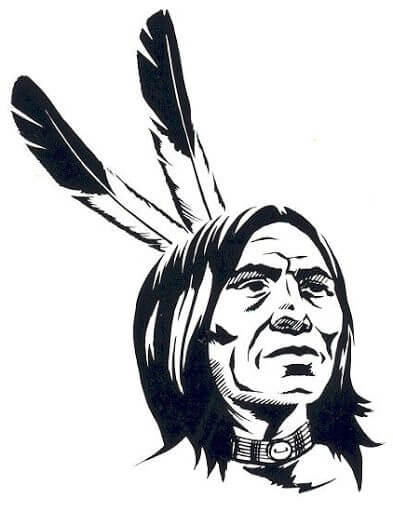- Home
- Holiday Ideas
-
-
- Choose Your Traveling Theme
-
- Adventure Tourism
-
- Cultural Tourism
-
- Tour Packages
-
-
- Packages by State
-
- Holidays by Interest
-
- Popular Tour Packages
-
- Fair And Festivals
-
- Ayurveda And Yoga
-
- Offers
-
- Destinations
-
West Indian Wedding Traditions
West Indian Wedding Traditions
An Indian wedding involves tons of fun, frolic, celebrations, rituals and holy ceremonies. Indian wedding traditions are gaining popularity across the length and breadth of the planet. In fact, many foreigners seek to urge married in India by indulging in Indian wedding traditions. Due to India’s rich cultural diversity, wedding traditions differ slightly consistent with the region. The West Indian wedding traditions mainly include the traditions of Maharashtrian, Gujarati and Marwari weddings.
The Maharashtrian wedding exhibits wonderful magnificence. Usually, marriages among the Maharashtrians happen within the morning. An auspicious time or Muhurat is chosen, which is understood because the Goraj Muhurat. During the ceremony at the time of Shubh Muhurat, the girl’s maternal uncle escorts her to the Mandap. The girl and boy aren’t allowed to ascertain one another for a few time. Then the shlokas are chanted and this is often followed by the removal of Antarpaat. People shower Akshata (unbroken rice) on the couple. The garlands are then exchanged between the bride and groom and therefore the couple takes Saat Pheras or Mangal Pheras ahead of the holy fire.
After the wedding ceremony, Laxmi Narayan puja is conducted, during which the bride and groom are worshipped as Goddess Lakshmi and Lord Narayan. The girl’s hand is formally given to the groom within the ceremony referred to as Jhal Phirawne or Kanya Daan. There has been a custom among the Maharashtrians to vary the name of the girl after marriage. This ceremony, if held is typically performed the groom’s house. The reception party is hosted on the night of marriage, that a special feast is ready.
Gujarati wedding ceremonies begin with offering prayers to Lord Ganesha and seeking his blessings. Like all other traditional Indian wedding, Mehndi and Sangeet ceremonies follow it. Jaimala or flower garlands are exchanged between the bride and therefore the groom twice. First time, the groom is on a better platform than the bride, while, the second time, they’re at an equal level. within the Madhuparka ceremony, the groom’s feet are washed and he’s given honey and milk to drink. While the ceremony is on, the bride’s sisters plan to steal the groom’s shoes, referred to as ‘Juta Churai’. The groom who seeks to possess his shoes back handsomely rewards them for this later.
One of the foremost important wedding rituals is Kanya Daan during which the bride’s father washes the groom’s feet and provides his daughter’s hand to him hoping that he will take excellent care of her. The bride is taken into account to be a sort of Goddess Laxmi and therefore the bridegroom is taken into account to be Lord Narayan. Hasta Milap ceremony involves the tying of the groom’s shawl to the bride’s sari. The tying of knot and therefore the joined hands of the couple are emblematic of the meeting of the 2 hearts and souls. The family and relatives sprinkle rose petals and rice grains on them.
Pheras come next and are rounds that the couple takes round the sacred fire, because the priest chants mantras. Saptapadi are the seven steps that the marriage walks together and takes seven vows. Then, the couple seeks the blessings of their parents and other elders. This marks the conclusion of the marriage ceremony and is followed by a reception party. Within the Vidaai ceremony, the bride bids farewell to her parents, friends and relatives and both of them part moving towards their home, with a replacement life awaiting them.
During the Marwari wedding, the Baraat has only male members. The Rajput groom generally wears a gold achkan and churidar or jodhpurs with an orange turban. The groom’s marriage procession is conducted royally. there’s no street dancing by the Baraatis. Everyone including the bridegroom rides an elephant or a horse and also carries swords in their hands symbolic of valor.
When the wedding procession of the groom arrives at the bride’s home, the women take the bridegroom inside. His mother-in-law gives him a warm welcome by performing the normal Aarti.
During the marriage ceremony the groom is escorted to the Mandap and is typically amid just one married blood brother and his younger brother or a younger male cousin. The bride generally has got to cover her face with an extended veil. the feminine members of the house mainly attend the marriage ceremony.
In the Bidaai ceremony, the bride bids adieu to her family, friends and shut relatives. At the time of Bidaai, a coconut is kept under the wheel of the car. When the newlyweds reach their house, the bride is received by the groom’s family. This tradition is understood as Griha Pravesh.
WANT TO RENT A CAR IN INDIA ?
Choose Your Traveling Theme
















